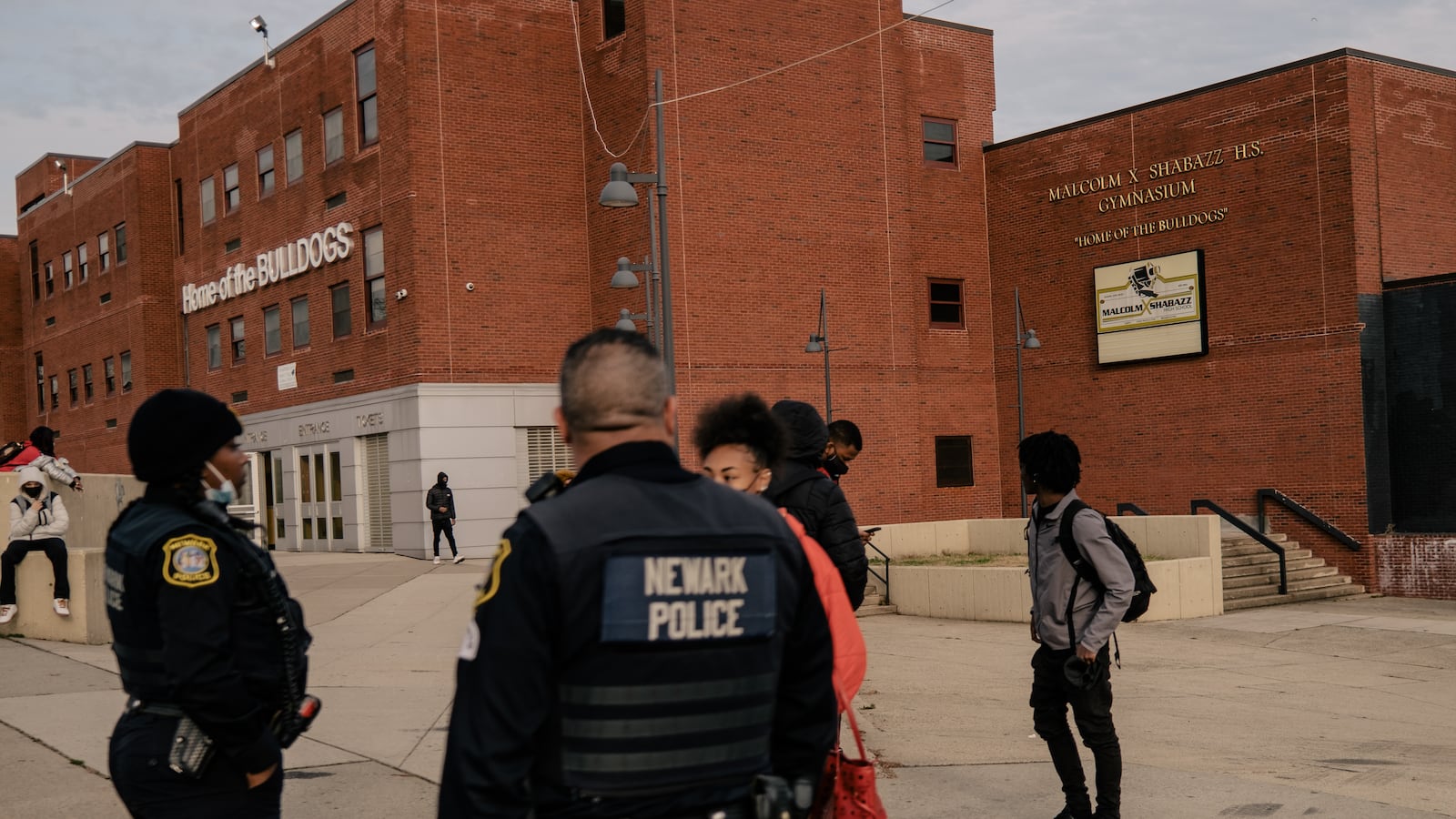The calls for help started the first week of classes at Malcolm X Shabazz High School.
Week one: The police were called about a fight at the Newark school, police records from this September show. Week two: an assault in progress. Week three: “criminal mischief.” Week four: an alleged sexual assault.
In October, a melee in the cafeteria sent the school into lockdown, according to students and videos. In a separate incident, two students punched and kicked a young woman as she cowered in a hallway, another video shows. In November, a gunman fired at students just after dismissal. Around the same time, a fight outside the school ended with a group of students stomping on a young man, a different video shows.
The vast majority of Shabazz students aren’t involved in the violence or disorder; they just want a safe, stable place to learn. But the chaos still has disrupted their classes, tarnished their school’s reputation, and exacted a psychic toll.
“I didn’t really feel safe,” said Alana Syphus, a ninth grader who transferred out of Shabazz this fall.
Across the country, educators reported a surge in behavior challenges this fall and unprecedented mental health needs as students readjusted to school while still coping with pandemic stress and uncertainty. Nearly 60% of parents in a recent poll called increased bullying and violence in school a major issue, and nearly 80% said they’re concerned about how schools are handling discipline issues.
But while the pandemic fueled such problems, it didn’t create them. During the 2019-20 school year at Shabazz High School, students were attacked in classrooms and the main office, according to interviews and incident reports. They were stabbed with pencils and hit by chairs. Both students and staffers had to seek medical treatment after altercations.
In private messages and at public meetings, parents and employees pleaded with officials to address the chaos at Shabazz. Yet it persisted.
“Innocent kids were getting harmed — inside the building, outside the building,” said Sharma Eagan, whose daughter is a Shabazz senior. “A lot of things were happening.”
The safety challenges are only one component of the crisis at Shabazz. In addition to violence, the school has struggled with instability, low academic achievement, and declining enrollment for many years and under multiple district leaders, according to a review of school data, incident reports, and police records, as well as interviews with more than 40 current and former officials, school employees, parents, and students.
Allowed to fester, the problems have intensified. Today, Shabazz’s enrollment has dwindled to 277 students — a third of what it was a decade ago. Its graduation rate fell to 62% last year, almost 20 percentage points below the district rate, and just 1 in 3 graduates headed to college in fall 2020.
During the 2019-20 school year, Shabazz’s suspension and serious-incident rates were many times higher than the district average, even exceeding rates at similar high schools.
This November, nearly 60% of Shabazz students were chronically absent — more than any other Newark high school.
District policies and a lack of urgent attention have entrenched the school’s troubles. Most notably, Newark’s two-tiered high school system steers the top-performing students into selective schools and young people with the greatest academic and social-emotional needs to comprehensive high schools such as Shabazz. Shabazz enrolls far more students with disabilities and behavior disorders and mid-year arrivals than any selective school serves.
The district superintendent, Roger León, promised to revitalize the city’s troubled high schools. Yet by opening even more selective schools, he may have deepened the hole that schools like Shabazz are struggling to climb out of. And while he was directly warned about the turmoil at Shabazz, even receiving videos of the violence, it continued under his watch.
A district spokesperson said all reported incidents at Shabazz were investigated and addressed, and the new principal who started this school year has taken steps to improve learning and safety at the school.
Across the country, no school has escaped COVID’s grip. Yet schools that struggled prior to the pandemic, often because they serve the neediest students with limited resources, were especially vulnerable to its disruptions.
In Newark, the failure to forcefully intervene at Shabazz and similarly troubled schools meant they were on shaky ground when the pandemic erupted. Because state and district officials allowed Shabazz to sink so low over so many years, it faces a far steeper path to recovery. And now, as the latest surge forces students back to remote learning, any fragile progress has been put on hold.
The pandemic might be the most dire emergency to beset the school — but it’s far from the first.
Brit Harley, who helped a nonprofit run an enrichment program in Shabazz for several years, said that long before COVID, successive superintendents allowed Shabazz to spiral out of control.
“I was always appalled at what seemed like the lack of oversight and care from the district,” she said recently. “Why was there not an SOS? How can this continue?”
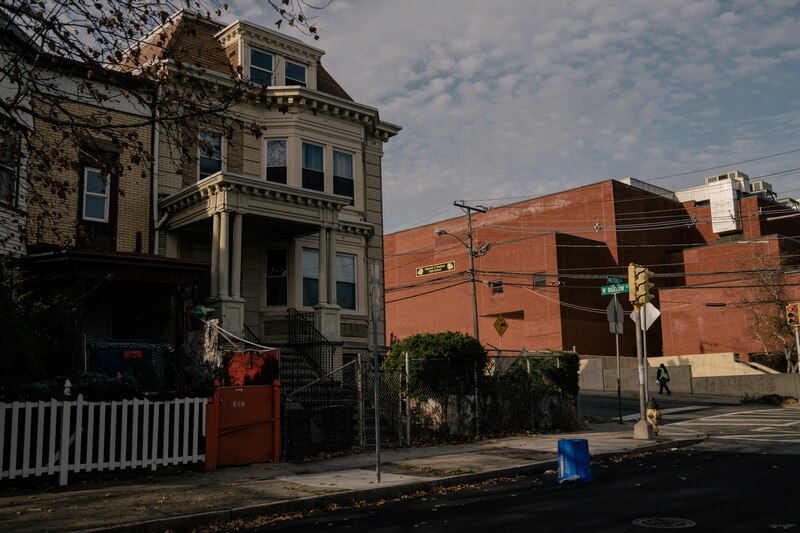
The making of Shabazz
Before it became Shabazz, the sprawling South Ward campus was home to South Side High School.
South Side opened in 1914 when Newark was a growing, majority-white industrial city. Within a few decades, the population transformed as waves of Black southerners moved North and racist housing policies drew white families to the suburbs but confined Black families to the inner city.
Between 1920 and 1970, Newark’s population shifted from 96% to 44% white, and from 4% to 54% Black. In 1972, South Side students led a push to rename the school in honor of the slain civil rights leader Malcolm X Shabazz.
South Side and Shabazz produced many accomplished alumni, including former Newark Mayor Sharpe James, former New York City Mayor Ed Koch, Home Depot co-founder Bernie Marcus, and Grammy Award-winning singer Cissy Houston. The campus also has long boasted an acclaimed marching band and powerhouse football and basketball teams.
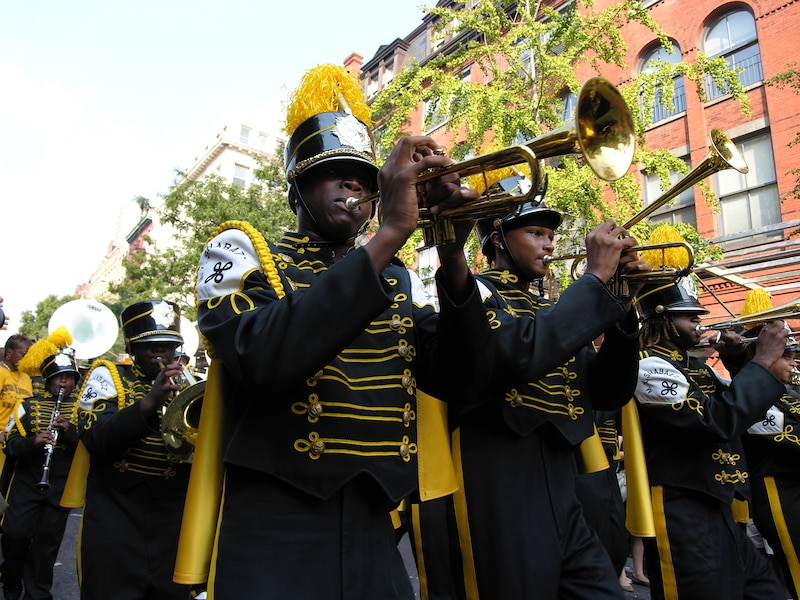
Yet as deindustrialization, white flight, and government disinvestment wreaked havoc on Newark over many decades, Shabazz suffered too. Violence and poverty in the community seeped onto the campus. “It’s getting more and more difficult,” a Shabazz teacher told a reporter in 1993 as the school grappled with gangs and absenteeism.
The state seized control of Newark’s schools two years later, but little changed at Shabazz. In the 2000s, it spent seven consecutive years on the state’s struggling schools list due to poor performance.
In 2010, state observers found students roaming the halls during class and pulling fire alarms. The “adults in the building have lost control,” the observers wrote, calling it “a school in crisis.” Faulting the state-operated district for providing inadequate support, the reviewers recommended shutting down Shabazz and replacing it with small academies.
The state did not close Shabazz. “It would be like tearing down City Hall,” a former district official told Chalkbeat, citing its devoted alumni network. Instead, in 2011, Shabazz got its fourth new principal in as many years: a 27-year-old named Gemar Mills.
“The school was in disarray,” said Mills, who was promoted from vice principal. “Students were running the building however they wanted to.”
Mills and his team made aggressive changes. They cracked down on gang activity and fights. They replaced graffiti with murals. They held weekly pep rallies and posted online videos promoting “the new Shabazz,” symbolized by its feisty bulldog mascot.
“When we first got there, Shabazz was one of the worst schools in the country,” said Altarik White, an alum who joined Mills’ administrative team. “Through our efforts, we were able to bring back that bulldog bite.”
But when Mills left after just four years at the helm to help lead a national nonprofit, Shabazz began to backslide. The school had relied on a charismatic leader to overcome structural challenges that never went away.
The deep-rooted obstacles include pervasive poverty and crime surrounding Shabazz. In 2019, the poverty rate in the school’s ZIP code was five times the statewide average. Last year through Dec. 5, the local police precinct encountered more than 40% of the city’s shooting victims.
In addition, Shabazz and its feeder schools compete for students and funding with Newark’s many charter schools, which are concentrated in the South Ward. But arguably the greatest hindrance is the district’s own enrollment system, which ushers high-achieving students to selective high schools and the neediest students to Shabazz and the other comprehensive high schools.
This school year, about 31% of Shabazz students have disabilities — nearly twice the districtwide rate. Some parents of students with disabilities say district employees steered their children to the school. (The district spokesperson did not respond to that claim.)
“They said we had to go to Shabazz because he has special needs,” said Theresa Pringle, whose son enrolled at the school in 2018. “They guide you where they want to put you.”
In 2018, the most recent year when such data was available, Shabazz enrolled more students with emotional difficulties that affect learning and behavior than did any other district high school. And compared with selective high schools, a disproportionate share of students transfer to Shabazz during the school year, often because they were forced out of other schools due to discipline problems.
“Instead of having an alternative school, it’s been determined that Shabazz will be the school where all the behavior disorder kids will go,” said Donald Massey, a former Shabazz security guard and football coach.
A Shabazz 9th grader, whose name Chalkbeat is withholding, said the concentration of students with behavior challenges can impede on everyone’s learning.
“It creates a whole distraction for the school,” she said, “because now they bang on the doors, they run in the hallways.”
A 2011 study of Chicago schools found that schools serving more students with academic challenges were more likely to struggle with safety and order. In fact, students’ prior academic achievement had a bigger impact on school safety than crime and poverty in the surrounding area, the researchers found.
“We’re making some of these issues more challenging in the way we sort students” into schools, said David Johnson, a senior research analyst at the University of Chicago Consortium on School Research, who co-authored the report.
By sending so many students with academic and behavior challenges to Shabazz, the district created a combustible situation. By 2019, the situation had come to a head.
Chaos before the storm
Newark officials received repeated warnings that Shabazz was in trouble.
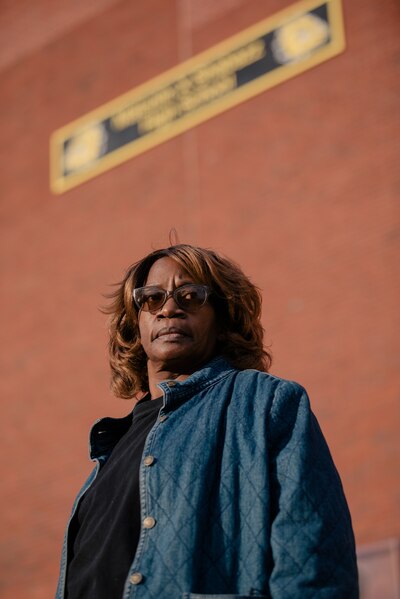
In August 2019, Pringle stood up at a school board meeting to call attention to the chaos. The previous school year, Shabazz had reported 62 serious incidents, the majority involving violence. Its rate of incidents was six times the district average. East Side High School, with four times as many students as Shabazz, reported only 38 offenses.
“These incidents are taking place on school grounds during the school day and escalating into the community,” she said, “putting my son’s safety in imminent danger.”
As predicted, the violence resumed as soon as the 2019-20 school year started. On Sept. 12, a brawl broke out between periods, records show. The next morning, three students attacked a young man at a nearby bus stop. The student was rushed to a hospital.
In the following weeks, students fought or were attacked in stairwells, hallways, and locker rooms, according to incident reports and videos. One student flung a laptop at a classmate’s face, sending him to the hospital. On at least two occasions, security guards had to seek medical care, the reports show.
“It was constant fights breaking out,” said Naheim Dixson, who was a senior that school year.
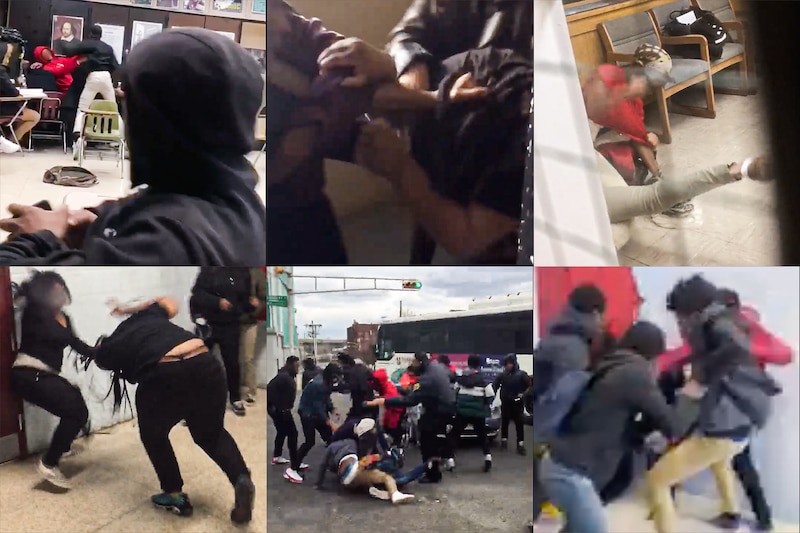
Students recorded the mayhem. In one video, the principal, wearing a black suit, rushes into a crowd of dozens to break up a fight. In another, a young woman pummels a student on the floor of the main office. In yet another, four young men assault a fifth student in a stairwell. “The incident could be described as extremely violent and predatory in nature,” the incident report reads.
León was aware of the violence. An alarmed Shabazz employee had been texting the Newark superintendent videos of the brutality, which León referenced at a staff meeting, according to an attendee.
On Feb. 5, 2020, the employee sent León a video of a young man entering a classroom, punching a seated student in the face, and chasing him into the hallway.
“I know in the past I’ve sent you multiple videos of the mayhem that’s going on in Shabazz,” the staffer wrote to León, according to a screenshot of the message shared with Chalkbeat. The employee wrote that León previously referred him to an assistant superintendent, whom the employee contacted, yet the violence continued.
“Mr. Leon if something isn’t done soon,” he wrote, “Shabazz will inevitably end up on the 5 o’clock news.”
The warning was eerily prescient. The next day, footage of several Shabazz basketball players attacking their coach appeared on the evening news. The story soon was picked up by the Washington Post, CNN, and Fox News. Newark’s mayor issued a statement and the assistant superintendent met with Shabazz families, but parents and staffers said they didn’t hear from León.
“When the big stuff goes down, he ain’t there,” said Eagan, the Shabazz parent.
León did not respond to questions about the specific steps he took to address the violence at Shabazz.
“Any and all reported incidents regarding Malcolm X Shabazz High School have been investigated, and appropriate action has been taken in response,” district spokesperson Nancy Deering said in a statement.
The disorder weighed on students. Erica Mends, who was in 12th grade that year, recalled students wandering the halls during class and teachers locking classroom doors to prevent intrusions.
“Every single day we go to school, we don’t know what to expect,” she said. “What is going to happen in the hallway? Who is going to say what to who?”
The chaos compounded other issues. Former students remember sitting in half-empty classrooms while their peers skipped school, and long-term substitutes replacing teachers who quit mid-year.
“It was a miserable, unhappy place to work,” said a teacher who left after the 2019-20 school year.
The violent videos were widely viewed, overshadowing students’ many accomplishments.
“Shabazz is filled with smart kids,” said Dixson, who graduated in 2020 and plans to join the military. But they were “outshined because everyone shined a light on the bad things.”
Pringle felt she had to remain vigilant while her son was at Shabazz. She documented 38 visits to the school to raise concerns about safety and other issues.
“Safety has to be addressed,” she said in an interview. “Parents should feel confident that when their children go to school, they won’t get a dreaded call that something has happened to your child.”
The violence at Shabazz continued through March 13, 2020, when a “male student decided to start hitting [a] female student” in the cafeteria, according to the incident report. That evening, the district announced it was shutting down school buildings due to the fast-spreading coronavirus.
The following year and a half of remote learning offered students a reprieve from the violence at Shabazz, even as the pandemic created new hardships.
In spring 2021, more than a year after dozens of documented fights and assaults at Shabazz, León replaced Principal Naseed Gifted, whom he had installed at the school three years earlier.
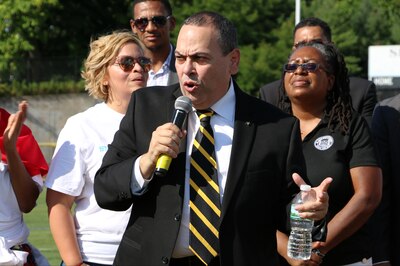
That June, the Shabazz employee who had sent León videos of the violence followed up with the superintendent in an email, which Chalkbeat obtained. (The employee, who no longer works for the district, requested anonymity to avoid retaliation.)
In the June 24, 2021 email, he said he had warned León, another official, and school board members about the “mayhem” at Shabazz, but “my concerns [fell] on deaf ears.” Now, he said, he worried what would happen when Shabazz students, who already “had major social and emotional issues prior to the pandemic,” came back to a school with new administrators and staffers.
“Mr. Leon, I’m praying the district has a plan for the students who will be returning to a school that doesn’t remotely reflect the school they left,” he wrote. “I’m praying for these kids.”
A steep climb ahead
Schools nationwide reported a wave of fights and disruptions when in-person learning resumed this fall. The strain was heightened at Shabazz, where students returned to a new principal and a campus known for violence.
“At the beginning of the school year, it was a fight like every day,” said 10th grader Amiyah McClinton.
A current Shabazz employee, who asked to remain anonymous, described witnessing many of the same problems that plagued the school before the pandemic: terrible attendance, frequent fights, and students wandering the halls during class. Remote learning had also exacerbated academic and mental health challenges.
“You come in and want to teach content,” she said, “but you can’t without first putting out a zillion fires.”
Shanaya Thomas, whose two children attend Shabazz, was already worried about the violence when she learned that a man fired a gun outside the school on Nov. 30, narrowly missing two students. The next day, Thomas emailed Superintendent León to ask that he allow her son and daughter to learn from home.
“You can’t keep my kids safe, so why would I send them to school?” she said in an interview. Last month, she notified the district that she’d be homeschooling her children.
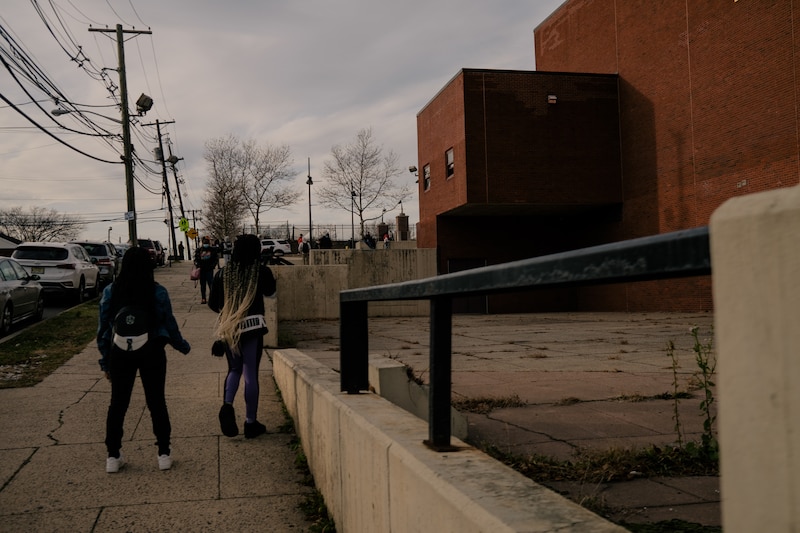
Yet despite those persistent challenges, the school has made some progress. Students say they’ve been impressed with the new principal, Atiba Buckman, who previously led a district elementary school. Buckman meets regularly with the newly established student government, rewards students for good grades and attendance, and recently brought some calm to the school, they said.
“There used to be fights every day; now it’s like every other day,” said Imani, a ninth-grader who declined to give her last name. “It’s not perfect, but they’re doing their best.”
Even when the school has seemed in disarray, it still offered opportunities. Members of Shabazz’s Biogeochemistry Team compiled data that was included in a published study; in 2017, one of the student-researchers won a full ride to Harvard. Parents and students praise the school’s cosmetology and engineering programs, its partnerships with local universities, and its vaunted athletic teams and marching band, which recently performed at an event featuring former President Barack Obama.
“A lot of people were telling me, ‘You put him in there, he’s going to fail,’” said Yvonne Davis, whose son, Tariq, is a sophomore who’s in the marching band and on the honor roll. “Tariq proved them wrong; he’s doing really good.”
Yet the school remains in distress. Its enrollment is at an all-time low and its graduation rate, which trails far behind the district average, is lower than it was a decade ago. Only 31% of Shabazz graduates in 2020 entered college that fall. This November, 6 in 10 Shabazz students were chronically absent, an alarming trend that suggests students are falling further behind instead of making up ground lost during the pandemic.
The dire situation at Shabazz and other struggling high schools bears little resemblance to the vision laid out by León, a former selective school principal who became superintendent in 2018. Early in his tenure, he promised to make high school improvement a centerpiece of his agenda.
“We are changing the entire landscape of not only this school system, but of every single high school,” he proclaimed in 2019.
His marquee reform was reinvesting in vocational programs at the comprehensive high schools and recruiting businesses and universities to support their career training.
But he has been less clear about his plan to improve academics at those schools, which continue to lag far behind the selective high schools in every key measure. For example, when New Jersey last gave its annual exams in 2019, 63% of students at the selective Science Park High School were proficient in math, compared with just 3% of students at Shabazz.
At the same time, León has made changes that could hamstring the comprehensive schools. He eliminated a small school for struggling students, and sent them back to the traditional high schools. He opened several new selective high schools, and instituted a new entrance exam that the selective schools can use to admit top-performing students. Meanwhile, Shabazz and the other comprehensive schools must admit all who apply.
“If they don’t get accepted by any other school on their high school application, they get funneled to Shabazz,” said the current Shabazz employee. “Honestly, I think the district is setting up the school to fail.”
Deering, the district spokesperson, said León plans to eventually restore alternative education programs, which previous superintendents phased out. She added that all comprehensive high schools offer honors and Advanced Placement classes. (Only 9% of Shabazz students took AP classes last year, according to district data.)
“Many South Side and Shabazz graduates have gone on to successful careers, major leadership roles, and a rich history with a committed, dedicated, and supportive alumni association,” she said in a statement. “The new leadership at the school has instituted steps to address academics, culture, climate, and students’ social and emotional learning needs.”
Deering declined to provide details about the improvements. Principal Buckman and Newark school board President Dawn Haynes did not respond to multiple emails.
The district’s response to the acute challenges at Shabazz and similar schools remains a work in progress.
At the December school board meeting, members pressed León about concerningly high rates of absenteeism, serious incidents, and suspensions. León cited an ongoing review of the district’s discipline policies and a plan to train students to provide peer-to-peer counseling.
“A lot of really important work needs to happen,” León told the board, “to actually see these numbers on a downward spiral.”
While successive officials promise change, generations of young people encounter similar problems at Shabazz.
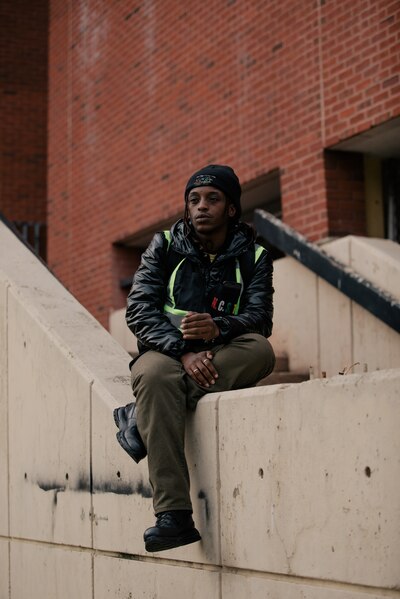
Malachi Muhammad, who graduated in 2016, remembers fights at the school and certain classes that offered little more than “babysitting.” It was known “for being a school that you get dumped into,” he said.
Today, Muhammad is a member of the Newark Community Street Team, whose staffers watch over students outside several designated schools, including Shabazz. Each day, the 24-year-old greets Shabazz students as they arrive and leave. He was talking to the two students the day the gunman exited a white car at dismissal and shot at them; Muhammad helped them escape.
Last month, he stood in the shadow of one of the school’s towering brick walls. It once featured a mural of Malcolm X Shabazz holding a page that read, “By any dreams necessary.” The mural was removed during repairs and never replaced.
Muhammad thought about the brilliance contained within those walls. Like young people everywhere, the students at Shabazz are capable of such greatness, he knew, if given the chance.
“A lot of these minds are revolutionary and they want something different,” he said. “But no one’s enabling it.”

